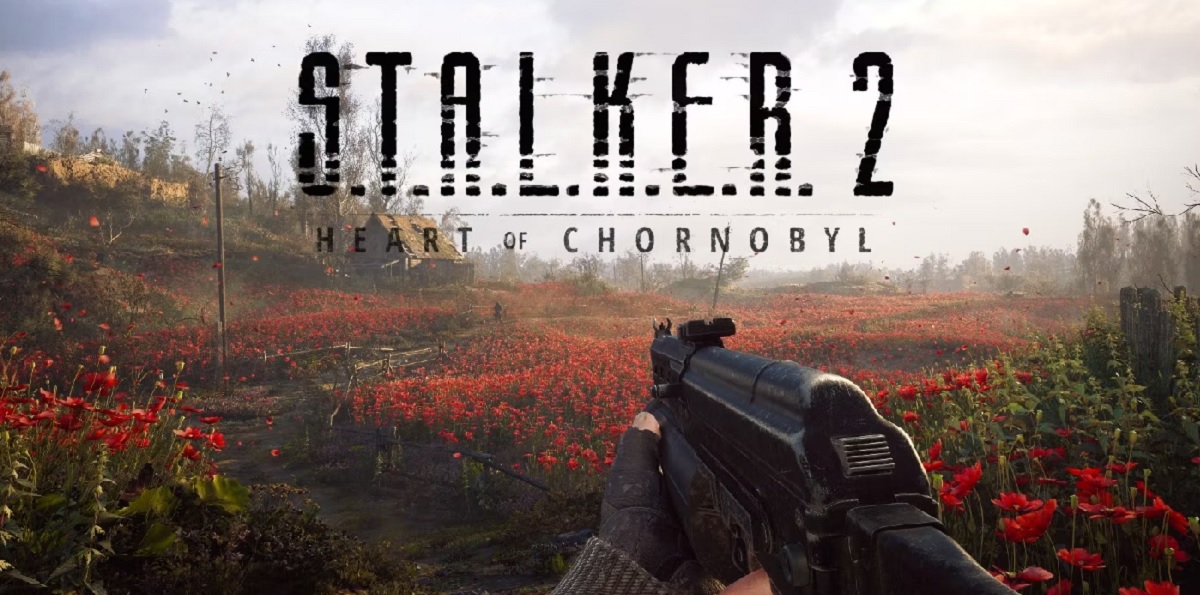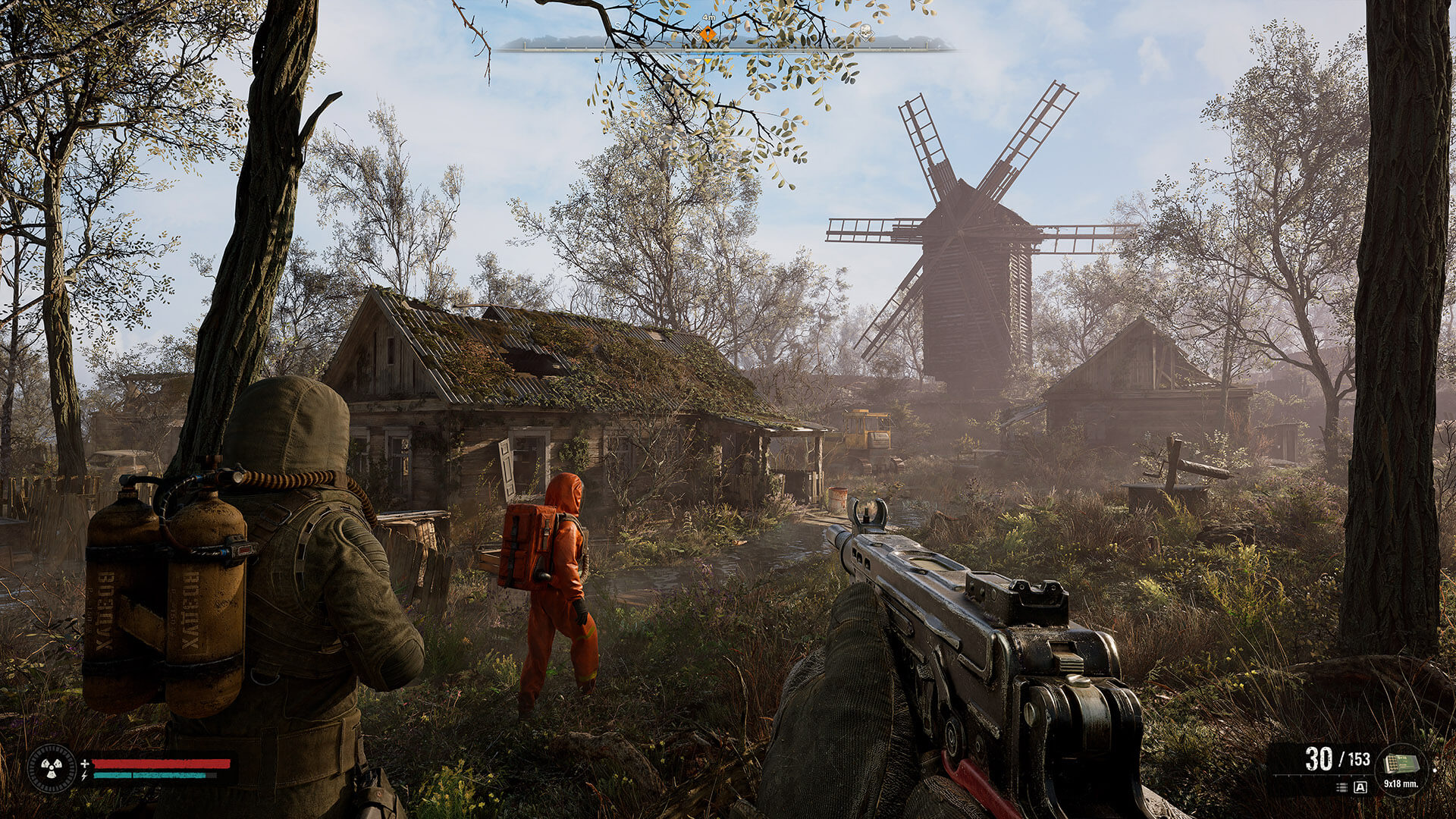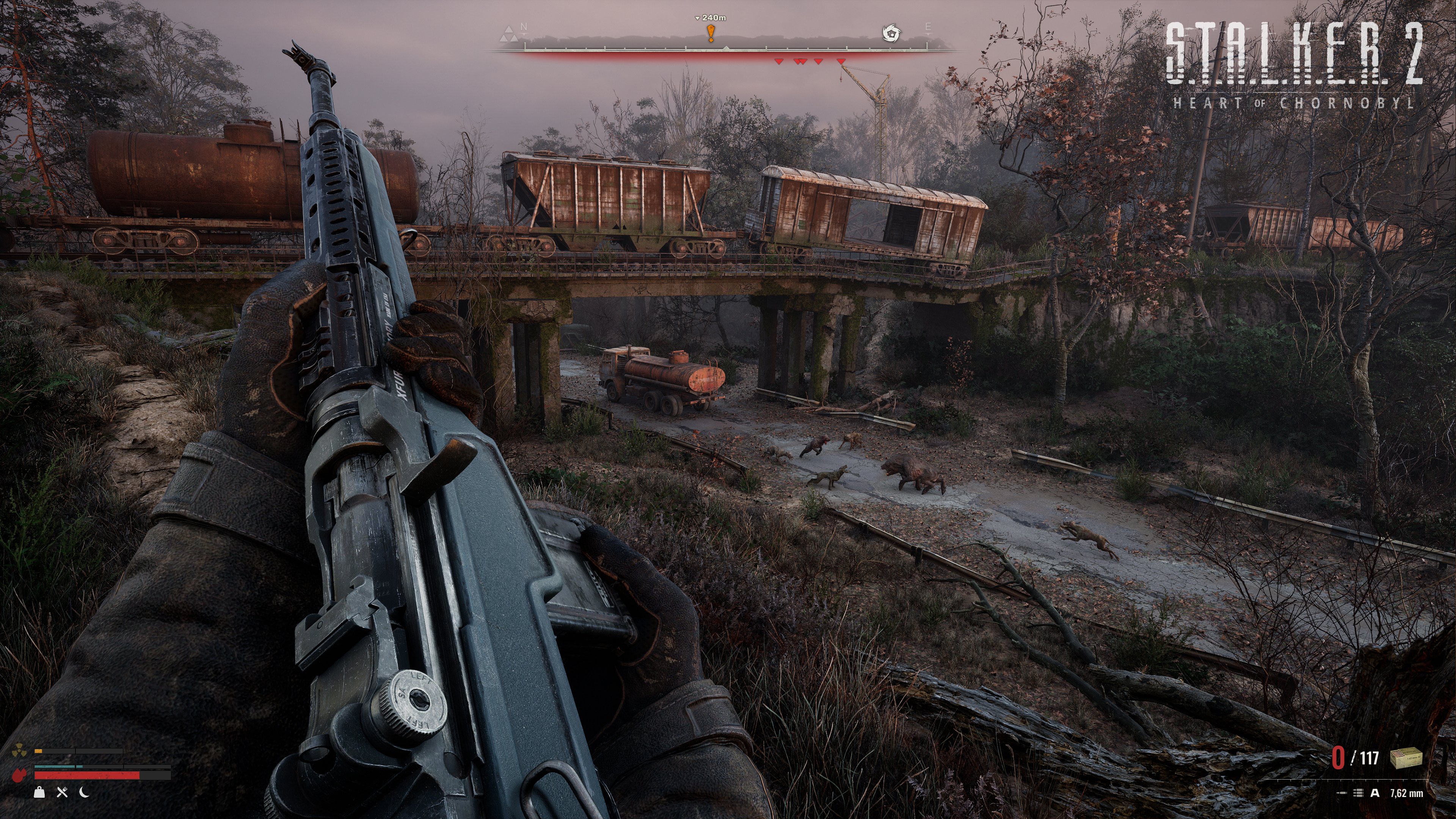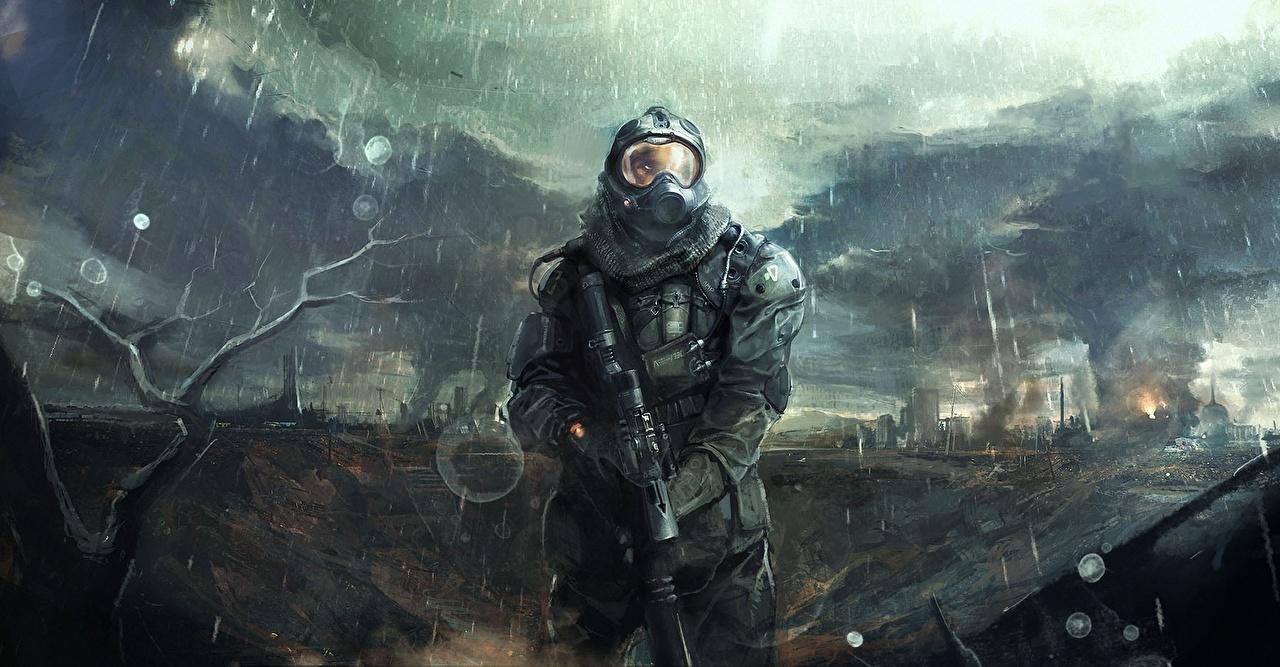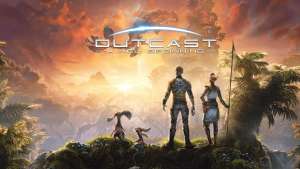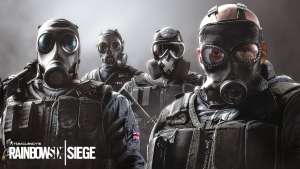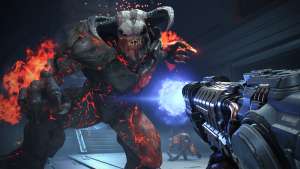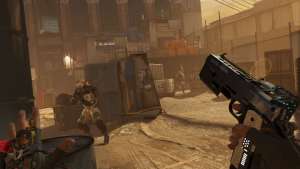The S.T.A.L.K.E.R. series has always held a special place in the hearts of survival horror enthusiasts. With its blend of immersive storytelling, chilling atmosphere, and unforgiving survival mechanics, the franchise set a benchmark that many games have attempted to emulate but few have matched. After a long and tumultuous wait, S.T.A.L.K.E.R. 2: Heart of Chornobyl promises to take everything fans loved about the original trilogy and elevate it to a whole new level. This isn’t just another game; it’s an ambitious project that aims to redefine the open-world survival horror genre.
A Brief History of the S.T.A.L.K.E.R. Series
To understand the significance of S.T.A.L.K.E.R. 2: Heart of Chornobyl, we need to revisit the roots of the series. The franchise debuted in 2007 with S.T.A.L.K.E.R.: Shadow of Chernobyl. Set in a reimagined version of the Chornobyl Exclusion Zone, the game introduced players to a world teeming with deadly anomalies, mutated creatures, and hostile factions. It wasn’t just another post-apocalyptic shooter; it was a deep and atmospheric experience inspired by the Strugatsky brothers’ novel Roadside Picnic and Andrei Tarkovsky’s film Stalker.
Following its critical and commercial success, two additional entries—S.T.A.L.K.E.R.: Clear Sky (2008) and S.T.A.L.K.E.R.: Call of Pripyat (2009)—expanded the lore and refined the gameplay. Together, they established the series as a cult classic, beloved for its unique blend of survival mechanics, dynamic AI, and immersive storytelling. However, after the release of Call of Pripyat, the series went on hiatus, leaving fans wondering if they’d ever return to the Zone.
The announcement of S.T.A.L.K.E.R. 2: Heart of Chornobyl rekindled that excitement, marking the series’ long-awaited comeback.
The Zone Reimagined
At the heart of S.T.A.L.K.E.R. 2: Heart of Chornobyl is the Chornobyl Exclusion Zone, a sprawling open world rendered in stunning detail. Unlike its predecessors, which featured segmented maps, Heart of Chornobyl offers a seamless open-world experience. Powered by Unreal Engine 5, the game’s environments are breathtaking, blending the eerie beauty of abandoned industrial ruins with the otherworldly glow of anomalies.
A Living, Breathing World
One of the game’s most exciting features is its dynamic world. NPCs, wildlife, and mutants interact independently of the player, creating a sense of unpredictability. A seemingly routine scavenging trip could be interrupted by a mutant ambush or a faction firefight, forcing players to adapt on the fly.
The Zone’s weather and day-night cycle also play a crucial role. Storms can obscure visibility, while nighttime brings heightened risks as more dangerous mutants emerge. Every decision—whether to press on or find shelter—can have life-or-death consequences.
Gameplay: Survival at Its Core
S.T.A.L.K.E.R. 2 builds on the franchise’s survival mechanics, offering a challenging yet rewarding experience. Players must carefully manage resources such as food, water, and ammunition while navigating a world rife with danger.
The Threats of the Zone
The Zone is as hostile as ever, populated by:
- Anomalies: Strange, physics-defying phenomena that can kill in an instant. Players can use bolts to detect anomalies and navigate safely, but one misstep could spell doom.
- Mutants: From packs of feral dogs to terrifying monstrosities like the Bloodsucker, mutants pose a constant threat.
- Hostile Factions: Rival Stalkers and mercenaries are just as dangerous as the Zone itself, willing to kill for valuable artifacts or resources.
Dynamic Factions
The game introduces a more intricate faction system. Players can align with various groups, such as Duty, Freedom, or bandits, each with its own ideology and goals. These alliances—or betrayals—can shape the narrative and influence the world.
Scavenging and Crafting
Resource scarcity forces players to scavenge for supplies, weapons, and artifacts. Artifacts, found within anomalies, are highly valuable but often come at great risk. Crafting and upgrading weapons and equipment will be essential for survival.
Storyline: Unveiling the Mysteries of Chornobyl
The narrative of Heart of Chornobyl remains shrouded in mystery, but what we do know is intriguing. Players assume the role of a lone Stalker, driven by a quest to uncover the secrets of the Zone. While the overarching story is nonlinear, featuring branching paths and multiple endings, it delves into themes of greed, survival, and humanity’s insatiable curiosity.
Early previews suggest that the game will introduce new characters alongside returning favorites, offering a mix of personal drama and larger philosophical questions about the consequences of humanity’s actions.
Technical Advancements: Unreal Engine 5
S.T.A.L.K.E.R. 2: Heart of Chornobyl is a visual marvel, thanks to Unreal Engine 5. The engine enables photorealistic textures, lifelike lighting, and advanced physics, making the Zone feel more immersive than ever. Highlights include:
- Dynamic Lighting: Sunlight filters through broken windows, while storms cast ominous shadows across the landscape.
- Weather Effects: Rain, fog, and wind not only affect visibility but also influence gameplay.
- Environmental Interactivity: From destructible environments to realistic foliage, the world feels alive.
These technical advancements aren’t just aesthetic; they also enhance gameplay. For example, dense fog might obscure an enemy, forcing players to rely on sound and intuition.
Sound and Atmosphere: A Symphony of Dread
The S.T.A.L.K.E.R. series has always excelled at creating an oppressive atmosphere, and Heart of Chornobyl is no exception. The ambient sound design is a masterpiece, with distant howls, creaking metal, and the haunting hum of anomalies keeping players on edge.
The game’s soundtrack, composed by longtime collaborator Alexey Omelchuk, blends haunting melodies with tension-building crescendos, perfectly complementing the eerie beauty of the Zone.
Challenges in Development
The road to S.T.A.L.K.E.R. 2 has been fraught with challenges. GSC Game World initially announced the sequel in 2010, but the project was canceled due to financial difficulties. In 2018, the studio revived the game, only to face further obstacles, including the COVID-19 pandemic and the ongoing war in Ukraine.
Despite these hardships, the developers remained committed to delivering a game that honors the series’ legacy while pushing the boundaries of modern gaming.
Platform Availability and Editions
S.T.A.L.K.E.R. 2: Heart of Chornobyl will launch on PC and Xbox Series X|S, with no confirmed plans for a PlayStation release. The game will also be available on Xbox Game Pass at launch.
Editions
- Standard Edition: Includes the base game.
- Deluxe Edition: Features digital bonuses, such as an art book and soundtrack.
- Collector’s Edition: Offers physical items, including a detailed map of the Zone and exclusive memorabilia.
Multiplayer and Modding Potential
While the main focus is the single-player campaign, GSC Game World has hinted at post-launch multiplayer features. Additionally, the game is expected to support modding, a tradition that has kept the original trilogy alive in the gaming community for over a decade.
Fan Expectations and Reception
Anticipation for S.T.A.L.K.E.R. 2 is at an all-time high. Trailers and gameplay previews have impressed fans and critics alike, showcasing a faithful yet modernized take on the franchise. The game’s attention to detail, coupled with its ambitious scope, suggests that it could be a defining title of its generation.
Comparisons to Previous Titles
S.T.A.L.K.E.R. 2 retains the essence of its predecessors while introducing several innovations. Key differences include:
- Seamless Open World: Unlike the segmented maps of earlier games, the sequel offers a unified, expansive world.
- Improved AI: Enemies and NPCs are smarter, adapting to player behavior.
- Enhanced Visuals: Unreal Engine 5 brings the Zone to life like never before.
Cultural and Historical Significance
The S.T.A.L.K.E.R. series is deeply rooted in Ukrainian culture and history. Beyond its fictional narrative, the games reflect real-world events, such as the 1986 Chornobyl disaster. In light of recent geopolitical events, Heart of Chornobyl carries even greater cultural significance, serving as both a tribute to Ukrainian resilience and a reminder of the dangers of unchecked ambition.
Is It Worth Playing?
For fans of survival horror and open-world exploration, S.T.A.L.K.E.R. 2: Heart of Chornobyl is a must-play. Its combination of gripping storytelling, challenging gameplay, and stunning visuals ensures an unforgettable experience. Whether you’re a veteran of the series or a newcomer, the game promises to deliver.
Game Details
- Genre: Survival Horror, Open-World, First-Person Shooter
- Release Year: 2024 (anticipated)
- Platforms: PC, Xbox Series X|S (Day one on Xbox Game Pass)
- Ratings: Pending (expected M for mature content)
- Game Modes: Single-player, with potential post-launch multiplayer
- Developer/Publisher: GSC Game World
- Awards: Highly anticipated; recognized for visuals and design at gaming expos
- Worth Playing?: Absolutely. This is a game that deserves your attention.
Our Rating: ★★★★★ (Tentative)
With its rich narrative, breathtaking visuals, and intense gameplay, S.T.A.L.K.E.R. 2: Heart of Chornobyl is shaping up to be a genre-defining masterpiece. Whether you’re braving a mutant-infested swamp or unraveling the Zone’s mysteries, every moment promises to be unforgettable. Prepare yourself for a journey into the heart of the Zone—if you dare.

